Contents
Ready to take your workouts to the next level? Plyometrics might be the answer. These explosive exercises train your muscles to exert maximum force in short amounts of time, translating to greater jumping power, agility, and speed. But with great power comes great responsibility (potential for injury if done incorrectly).
This post will guide you through structuring a safe and effective plyometric workout that will have you leaping higher and moving quicker in no time.
What is plyometrics?
Plyometrics, also known as jump training, is a type of training that uses the stretch-shortening cycle (SSC) of muscle fibers and involves fast, explosive movements to produce maximum force in a short period of time.
It can significantly increase vertical jump height, agility, and overall power output by forcing the neuromuscular system to produce maximum force in minimum time. However, to unlock these benefits and minimize injury risk, a well-structured plyometric workout is essential.
Benefits Of Plyometrics
One of the key benefits of plyometrics is that they can help improve the function and efficiency of the nervous system. When performed properly, plyometric exercises can improve your reflexes and reaction times, as well as your overall explosive power. Plyometrics can also be a great way to increase your cardiovascular fitness and help you burn more calories during your workouts.
Here are some of the main benefits of plyometric exercises:
- Increases explosive power
- Improves speed and agility.
- Builds strength and endurance
- Enhances cardiovascular fitness
- Improves Athletic Performance
Plyometric exercises are designed to specifically produce fast, powerful movements, and to improve the functions of the nervous system. Strength, elasticity, and innervation of the muscle and its surrounding tissues are improved so you can be able to jump higher, run faster, throw farther, or hit harder, depending on your training goals.
Basic Principles of Plyometrics Training
Plyometric exercises are based on the stretch-shortening cycle (SSC), which refers to the ability of muscles to generate more force when they are pre-stretched before a contraction (1). When a muscle is rapidly stretched before it contracts, it stores elastic energy, which can then be used to produce a more powerful contraction. Plyometric exercises take advantage of this stretch-shortening cycle by involving quick, explosive movements that utilize stored elastic energy to generate maximal force in a short period of time.
Phases of Plyometrics
Plyometric training movements are those in which a muscle is fully loaded and then contracted in a certain sequence.
1- Eccentric Pre‐Stretch (loading) phase:
The eccentric pre‐stretch phase is also defined as the preparation and pre-loading phase. The goal of this phase is to store energy in the muscle and connective tissue, which can then be released in the subsequent phases. For example, in a squat jump, the eccentric pre-stretch occurs as you lower into the squat position.

2- Amoritization Phase (Time to Rebound):
This is the transition phase between the eccentric pre-stretch and the concentric shortening phase. The goal of this phase is to minimize the time spent in transition and maximize the transfer of energy from the pre-stretched muscle to the subsequent contraction. The shorter the amortization phase, the more explosive and powerful the subsequent contraction will be.

3- Concentric Shortening (rebound) Phase:
This is the phase where the muscle contracts and shortens, releasing the energy that was stored during the eccentric pre-stretch. The goal of this phase is to generate maximum force in the shortest amount of time possible. For example, in a squat jump, the concentric shortening phase occurs as you jump up from the squat position.
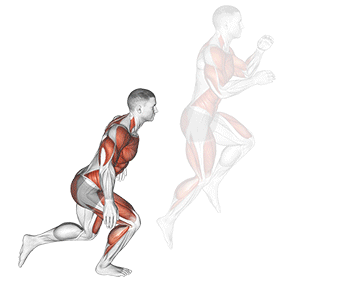
By understanding these three phases of plyometric exercises, athletes and fitness enthusiasts can optimize their training to maximize explosive power, speed, and overall athletic performance.
Definition of Plyometrics Exercises:
1- Lower Body Plyometrics Exercises:
There are three main types of plyometric exercises: jumps, hops, and bounds. Jumps involve jumping vertically, horizontally, or diagonally, while hops involve jumping on one foot. Bounds are similar to jumps, but involve longer, exaggerated movements that cover more ground. Each of these types of plyometric exercises can be modified and progressed to increase their intensity and difficulty.
Jump
A jump is a dynamic movement that involves pushing off the ground with both feet and propelling the body upward into the air. Jumps can be performed in a variety of ways, including from a standing position, a crouched position, or with a running start. Jumps are often used in sports and athletic activities that require explosive power, such as basketball, volleyball, and track and field.

Hops
Hops are similar to jumps, but they involve pushing off the ground with one foot and landing on the same foot. Hops are typically used for lateral movement, agility, and coordination, and they can be an effective way to improve lower body strength, power, and balance.
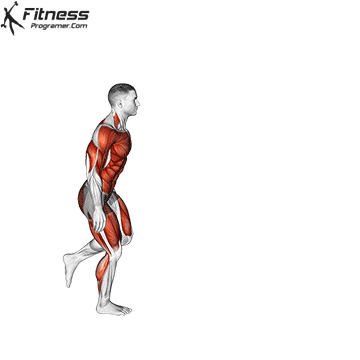
Bounds
Bounds are long, powerful strides that involve pushing off the ground with one foot and landing on the opposite foot. Bounds are typically used for traveling a greater distance in a single movement.

2- Upper Body Plyometrics Exercises:
Plyometric training is not limited to the lower body. Explosive upper body movements can enhance upper body power. Examples include clap push-ups, medicine ball throws, and plyometric push-ups.
Plyometric push-ups
Plyometric push-ups are an excellent way to boost upper body power and explosiveness. Plyometric push-ups involve forcefully pushing your body off the ground and performing a quick clap before returning to the starting position. Make sure you have a strong foundation in regular push-ups before attempting this variation. (Other examples; drop puh-ups, chest tap push-ups, plyo wide to narrow push ups)
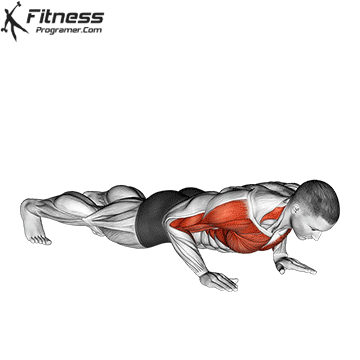
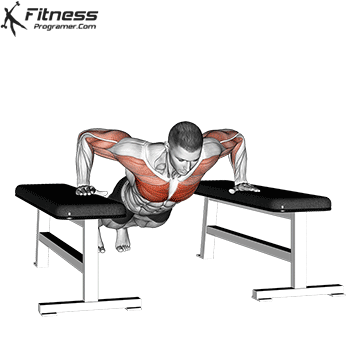
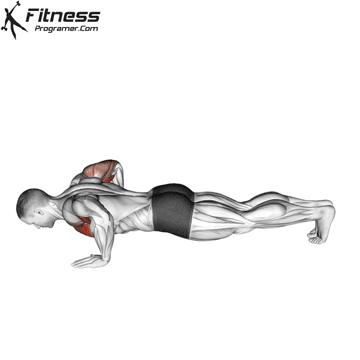
Jumping Pull-ups
The Jumping pull-ups provide a challenging combination of lower body explosiveness and upper body strength. This exercise is an effective way to enhance overall strength, power, and coordination. It’s especially valuable for individuals working on improving their pull-up technique or looking to add intensity to their plyometric training. (Other examples; plyo pull-ups, clap pull-ups)
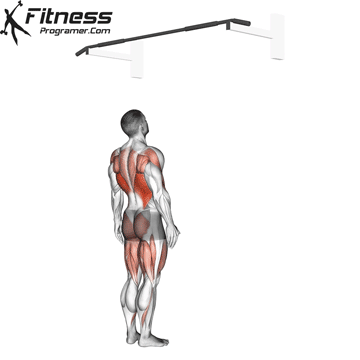
In summary, understanding the basic principles of plyometric training is essential for safe and effective workouts. By utilizing the stretch-shortening cycle and incorporating jumps, hops, and bounds, you can improve your explosive power and overall athletic performance. However, it is important to maintain proper form and landing technique to prevent injury and ensure that you see the best results from your training.
Proper Technique and Form in Plyometric Training
The Descent Phase: Key to Landing Safely
One of the fundamental aspects of plyometric training is the landing, or descent phase. Proper landing technique is crucial to minimize the risk of injury and ensure effective power transfer. Here’s how to nail the descent phase:
a. Soft Landing:
- Focus on a controlled and gentle landing to absorb the impact.
- Land on the balls of your feet, allowing your heels to touch the ground shortly after.
- Aim to distribute the force evenly through your lower body muscles.
b. Bent Knees and Hips:
- Flex your knees and hips upon landing to create a “cushioning” effect.
- This bending action helps dissipate the force throughout the muscles and joints, reducing stress on specific areas.
c. Neutral Spine Alignment:
- Maintain a neutral spine throughout the movement to protect your back.
- Avoid excessive rounding or arching of the spine upon landing.
Remember, every jump and landing is an opportunity to refine your technique, enhance your control, and ultimately elevate your explosive power and athletic performance.
Structuring a Beginner’s Plyometric Workout
When creating a beginner’s plyometric workout, keep these points in mind:
- Set Clear Goals: Define your fitness goals. Are you aiming to improve speed, power, agility, or overall athleticism? Your goals will guide exercise selection and workout structure.
- Assess Your Fitness Level: Be honest about your current fitness level. If you’re new to plyometrics, start with foundational exercises before progressing to more advanced movements.
- Exercise Selection: Choose a variety of plyometric exercises that target different muscle groups and movement patterns. Include jumps, bounds, hops, and throws. Focus on exercises that match your goals and fitness level. For example, if you’re a basketball player, focus on exercises that enhance jumping, quick changes of direction, and lower-body explosiveness.
- Structure the Workout: Organize the exercises into a structured routine. 2-3 sets of 5-8 reps per exercise are safe for beginners, but use circuits and intervals as you progress. For example, perform 3-5 sets of 3-5 different exercises, resting 2-3 minutes between sets.
- Frequency: Begin with 1-2 plyometric sessions per week, gradually increasing as your body adapts.
- Proper Progression: Start with low-intensity exercises and gradually increase intensity and complexity. Progress by adding reps, height, or resistance as your strength and skill improve.
- Rest : Allow sufficient rest between sets and exercises to prevent fatigue and maintain proper form. Depending on the intensity of the sets, resting between 2 and 5 minutes is recommended.
- Recovery: Plyometric training is intense. Schedule adequate rest days to allow your muscles to recover and adapt to the demands of the workouts. Recovery is generally recommended for 48 to 72 hours.
- Warm-Up: Always start with a thorough warm-up involving dynamic stretches and light aerobic activity to increase blood flow and prepare the muscles.
- Cool Down: After your plyometric workout, cool down with static stretches to promote flexibility and reduce muscle tension.
- Safety First: Prioritize safety by maintaining proper form, using appropriate footwear, and ensuring you have a suitable training surface.
Plyometric Workout Routines
Example Beginner Plyometric Training Program:
This beginner plyometric workout is designed to introduce individuals to plyometric training and develop basic explosive power. The entire workout focuses on explosive movements, engaging both upper and lower body muscles.
- Each exercise consists of 3 sets, with the specified number of repetitions (reps) indicated.
- Rest for 60 to 90 seconds between sets of each exercise.
- Over time, you can gradually increase the number of sets or reps as strength and technique improve.
- Squat Jumps – 3 sets of 8 reps
- Standing Long Jumps – 3 sets of 6 reps
- Lateral Bounds – 3 sets of 8 reps
- Modified Clap Push-Ups – 3 sets of 6 reps
Squat Jumps | 3 sets of 8 reps | 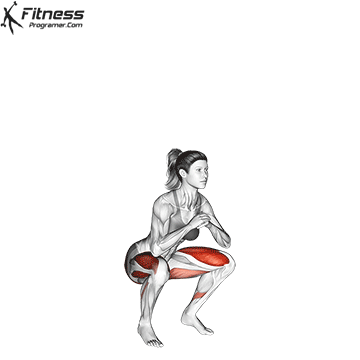 |
Long Jump | 3 sets of 6 reps |  |
Lateral Bounds | 3 sets of 8 reps | 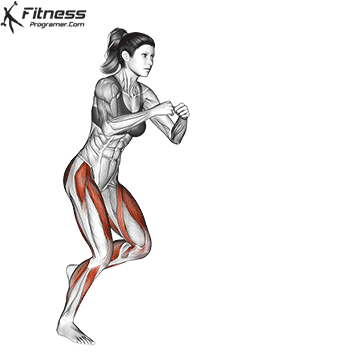 |
Clap Push-Ups | 3 sets of 6 reps |  |
Example Circuit Type Plyometric Training Program:
Do a 5 minute light cardio warm up. Jumping rope is a great way to get ready for Plyometrics.
3 rounds total / After finishing each circuit once, rest for 2-3 minutes and continue again.
- Exercise 1: Box Jumps 1 x 10
- Exercise 2: Chest Tap Push-ups 1 x 6
- Exercise 3: Bulgarian Split Jump Squats 1 x 8 (each leg)
- Exercise 4: Wall Ball 1 x 10 (optional weight)
- Exercise 5: Plyo Jack 1 x 10
Conclusion:
Plyometric training offers a dynamic pathway to unlocking explosive power and athleticism. By understanding the science, principles, and proper techniques, athletes at all levels can harness the potential of plyometrics to achieve their fitness and performance goals. Whether you’re just starting or seeking to elevate your training to new heights, this guide has provided you with the knowledge and tools to embark on a rewarding plyometric journey. Remember, patience, dedication, and a commitment to safety are the keys to reaping the full benefits of this powerful training method.
References:
- Ramirez-Campillo R, Sortwell A, Moran J, Afonso J, Clemente FM, Lloyd RS, Oliver JL, Pedley J, Granacher U. Plyometric-jump training effects on physical fitness and sport-specific performance according to maturity: a Systematic Review with Meta-analysis. Sports Medicine-Open. 2023;9:1–23. 10.1186/s40798-023-00568-6
- Ramírez-delaCruz M, Bravo-Sánchez A, Esteban-García P, Jiménez F, Abián-Vicén J. Effects of plyometric training on lower body muscle architecture, tendon structure, stiffness and physical performance: a systematic review and meta-analysis. Sports Medicine-Open. 2022; 8: 40. doi: 10.1186/s40798-022-00431-0
- Effects of Plyometric Jump Training on the Reactive Strength Index in Healthy Individuals Across the Lifespan: A Systematic Review with Meta-analysis https://pubmed.ncbi.nlm.nih.gov/36906633/
- Bosco C Komi PV. Potentiation of the mechanical behavior of the human skeletal muscle through pre‐stretching. Acta Physiol Scand. 1979;106:467‐472. https://pubmed.ncbi.nlm.nih.gov/495154/
- Current concepts of plyometric exercise. https://www.ncbi.nlm.nih.gov/pmc/articles/PMC4637913/



